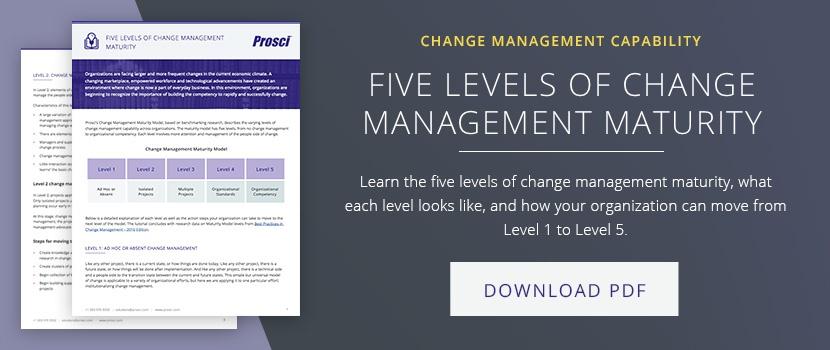“Launch and Leave” and Other Common Sponsor Mistakes

3 Mins
Updated: August 22, 2022
Published: February 20, 2019

You may already know the ABCs of sponsorship—Active and visible participation, Building a coalition, and Communicating support to promote the change. And you might also know that the number-one contributor to change success is having an active and visible sponsor (it has been number-one for twenty years). But do you know what not to do when sponsoring a project?
We asked participants in our 2018 Best Practices study to identify the biggest mistakes top-level sponsors made during major changes. Here’s what they told us:
1. Failed To Remain Active and Visible
The disappearing sponsor was cited as the most common sponsor mistake. Participants felt that too often, sponsors would attend the opening kickoff or send out the announcement email and then never be heard from nor seen again. Participants called this “launch and leave.” Sponsors would then move on to the next initiative without realizing the benefits of the original change.
How to avoid this mistake:
An active and visible sponsor must remain active and visible throughout the life of the project. This means not acting as a figurehead for the change (do not announce the change and walk away), but rather, continuing to attend project-wide trainings and meetings and vocally supporting the change, both in these meetings and in your daily interactions with employees.
2. Underestimated or Misunderstood the People Side
Participants stated that sponsors made incorrect assumptions about the degree of impact a change would have on employees. Sponsors underestimated the time and resources needed to conduct change management. Many sponsors believed that all that was required to get people to adopt the change was telling employees that the change was going to happen.
How to avoid this mistake:
Leverage tools to help analyze the people-side impact of change. Use Prosci’s Change Management Return on Investment Calculator to calculate how much of the project’s benefits depend on employees changing the way they work. Carefully consider the percentage of benefits that depend on employees adopting and effectively engaging in the change weighed against the cost of poorly managing the people side of change. Edify yourself in change management to gain a high-level understanding of all that is involved and resource appropriately. Remember, change management is not just communications. It is easy to dismiss change management activities and resourcing, but it can cost you the project benefits you are aiming for.
3. Failed To Communicate
Sponsors did not provide consistent messaging on business drivers and did not communicate the value of the change, assuming people understood what was going on and the need for change.
How to avoid this mistake:
Seventy-three percent of research respondents stated that they prefer to hear business reasons for a change from the executive leadership/sponsorship level. Research respondents also stated that the business messages they want to hear include:
- The necessity of the change
- The benefits of the change, including strategic objectives and potential ROI
- The risks of not changing
To avoid the mistake of failing to communicate, prepare to deliver these messages to the organization consistently throughout the change project.
4. Delegated the Sponsorship Role
A major cause of sponsors not communicating and not being visible was that they had delegated that role to the project team or lower managers, thus becoming sponsor in name only.
How to avoid this mistake:
Ensure you are the right sponsor for the change. Research shows that an ideal sponsor:
- Has direct control over the people, processes, systems and tools being impacted by the change
- Is willing and able to be active and visible throughout the entire project
- Will communicate directly to employees about why the change is being made and the risk of not changing
- Will remain in the organization throughout the implementation of the change
- Is credible and respected by employees and managers within the organization
Confirm you have the majority of the ideal traits of a sponsor and the time to dedicate to effectively fulfilling the role and commit to performing the role of the sponsor throughout the lifecycle of the project. If you are unable to fulfill this role or are the wrong individual to be sponsoring, work with your sponsorship coalition to select an appropriate sponsor prior to kicking off the change initiative.
5. Failed To Demonstrate Support for the Project
Sponsors did not walk the talk when it came to supporting change. Sponsors failed to lead by example or promote or champion the change. They instead viewed change as the “flavor of the month” and did not hold people accountable for a project’s success.
How to avoid this mistake:
Commit to demonstrating support and advocacy for the change. Don’t assume communicating the business reason is enough or assume that because the change is obvious, rational and logical it doesn’t require any direct support. You are always leading, ensuring that your actions demonstrate what you want your employees to do in the change.
Becoming a Better Sponsor
Are you guilty of any of these common mistakes? Are your peers? By becoming a better sponsor of change, you will bring your organization to a higher level of change management maturity and see greater project success. Learn more about how your organization can improve project results with this overview about the five levels of an organization’s change maturity.


